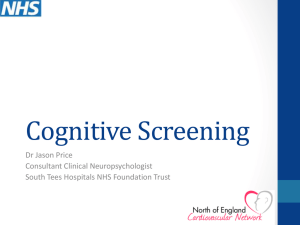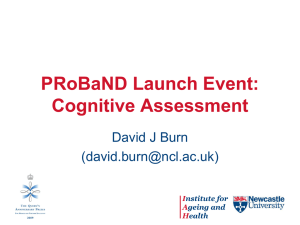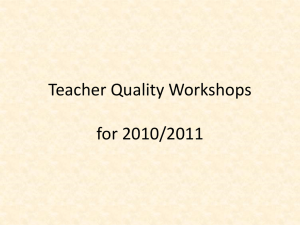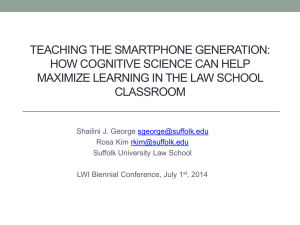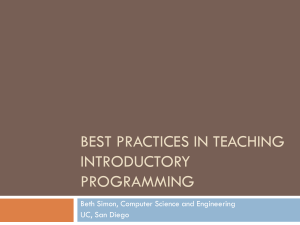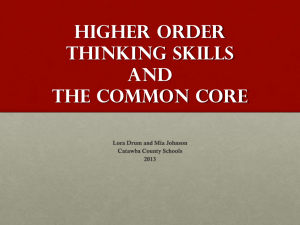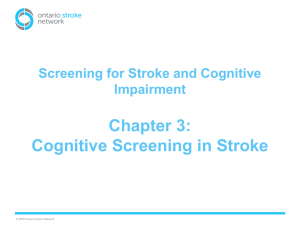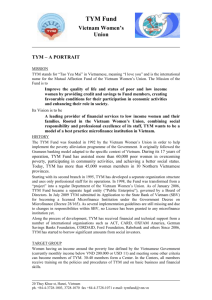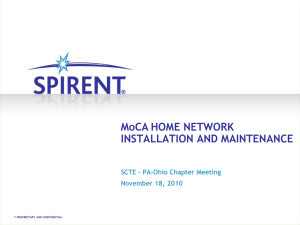Memory - PAAST
advertisement
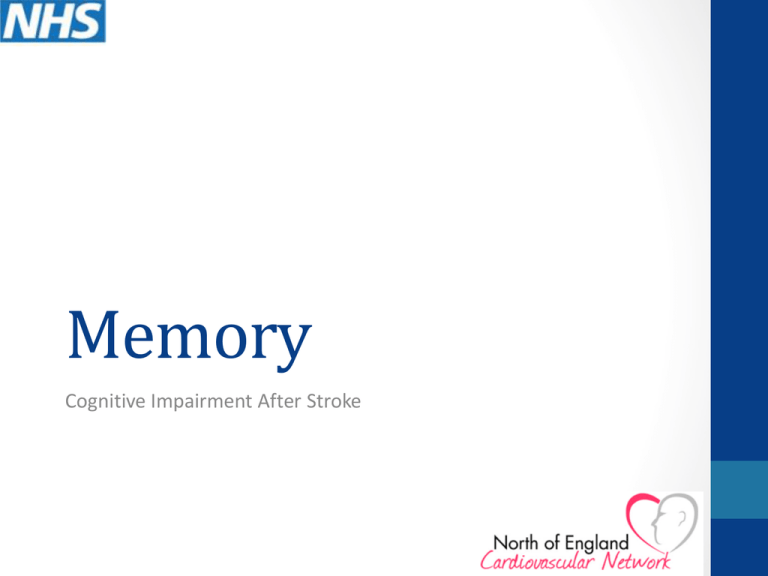
Memory Cognitive Impairment After Stroke Types of Memory • There are several different types of memory, and any one of these (or several of these) can be affected by stroke: Declarative Memory Procedural Memory Semantic Memory Episodic Memory How to Assess for Memory Problems • You will most likely get an idea of any memory difficulties that a patient is having, just from talking to them and working with them. • However, to help identify specifically where the problems lie, there are a number of assessments and screening tools which include a section within them to test memory. • You may have some experience of using these tools (e.g. the MMSE) and each organisation will have it’s own preferences with regards to which tool they use. • On the following slides, there is information about some of the most popular, free to use screening tools. Addenbrookes Cognitive Examination – Revised (ACE-R) • The ACE-R tests various cognitive domains, including attention, orientation, language, fluency, visuospatial, and memory. • The memory sections of the ACE-R test recall, anterograde memory and retrograde memory. • Recall refers to the retrieval of information. • Anterograde memory refers to the ability to remember new information. • Retrograde memory refers to the loss of memories acquired before the brain injury (caused by the stroke). • You can find the ACE-R in the PAAST toolkit. Abbreviated Mental Test (AMT) • The AMT is often used to screen for dementia, but is also valuable to identify cognitive impairments after stroke. • The test consists of just 10 questions, including the following to test for memory difficulties: • Give the patient an address, and ask him or her to repeat it at the end of the test. • What is your date of birth? • In what year did World War 1 begin? • Name the present monarch/prime minister. • You can find the AMT in the toolkit. Montreal Cognitive Assessment (MoCA) • The MOCA tests a range of different cognitive domains, including visuospatial/executive function, naming, memory, attention, language, abstraction, delayed recall and orientation. • The memory task mainly focuses on recall, asking the person completing the test to repeat a list of words twice. • They are then asked to recall the words later on in the test. • Many health professionals like the MoCA as it is quick to complete but also covers a wide range of cognitive domains. • You can find the MoCA in the toolkit. Six Item Cognitive Impairment Test (6-CIT) • The 6-CIT is a very short screening tool, often used to identify dementia but can also be used to flag up cognitive impairment after stroke. • The tool consists of just 6 questions, including one memory task. • The test is scored quite differently to most screening tools, as you get a score of zero for a correct answer. • This means that a very low overall score for the 6-CIT indicates no cognitive impairment, whereas a higher score would show that many questions were answered incorrectly. • You can find the 6-CIT in the toolkit. Test Your Memory (TYM) • The TYM test is a relatively new test and focuses mainly on screening for memory difficulties (as the name suggests!). • There are 10 different sections within the test, but despite this, the majority of people only take 5-10 minutes to complete the TYM test. • As well as recall questions, anterograde and retrograde memory questions (similar to those seen in the screening tools mentioned previously), there is a visual memory/naming task, mental arithmetic questions, letter fluency task and a clock drawing exercise. • The TYM test requires little supervision and has been validated against the MMSE and ACE-R. • The TYM can be found in the toolkit. Activity • In the toolkit there a copies of each of the cognitive screening tools mentioned in this presentation. • In pairs, choose one of the screening tools and practice using it on each other. • Make a note of your thoughts/feelings about the tool. • • • • What are the positive points? What are the negative points? Would you consider using it with a patient? Can you think of any problems that may come up when using it with a patient? How Can You Help? • Many things can affect memory – including sleep deprivation, fatigue, other cognitive deficits such as attention difficulties, mood, anxiety, pain, or medication. • It is important therefore that the first thing you do is look at the problem in the context of everything else that is going on for the individual. • If you do notice anything that could be contributing to the memory difficulties, it is important that you use strategies to help with these problems as well as the memory problem itself. How Can You Help? • Calendars and Diaries • Having a calendar, timetable or diary within sight is very important for someone with memory difficulties as it can help them to feel more in control of their lives. • Try to book appointments in with patients (even while they are on the ward), giving lots of notice and if possible make it a regular time (same time and day each week). • Prompt your patient to look at their calendar regularly if they are forgetting to use it. How Can You Help? • Electronic Organiser • Many people now have smart phones or tablets which can be used as an electronic organiser. • This is a great way of remembering appointments and events, especially for working aged adults who may be used to using this technology on a day to day basis. • Many smart phones have a specific reminder application, or a to do list which can be updated every day – as well as a standard calendar which can be set up to alert the owner before an event. How Can You Help? Chunking Recognise learning styles Mnemonics Teaching Strategies Making things meaningful Use pictures Repetition How Can You Help? • Environment • Use the environment to provide prompts and reminders. • For example, you could place a sign on the back of a bedroom door, reminding someone to check their diary to find out what they have on that day. • You could also set up a table or shelf of “things to do” where someone could put bills to be paid, library books to be returned, shopping lists etc. • The use of whiteboards in the home can be very helpful too, allowing people to leave notes to themselves, or for others to leave notes from them – providing prompts and reminders whenever they are needed. Summary • Memory difficulties can present themselves in a number of different ways, as memory is such a complex process. • Screening tools and assessments like the ones mentioned in this presentation, can help to identify which type of memory is affected and give an idea of how severe the problem is. • For many people, their memory will gradually improve following stroke and although it may never be as it was prestroke, it can become far easier to live and function with. • Employing strategies such as using prompts, memory strategies and altering the environment can help people live a more independent life


